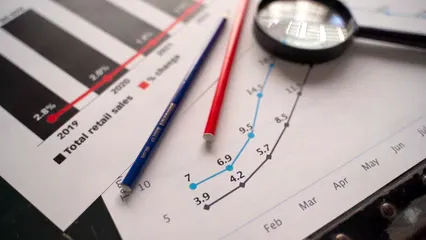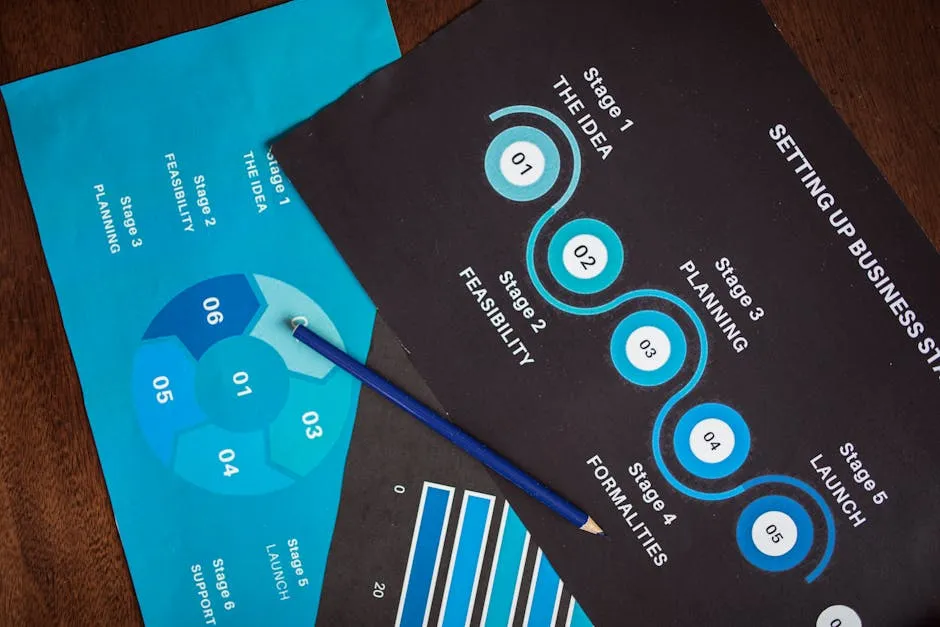Introduction
A Mall Central Sales Report is a vital tool for retail analysis. It helps stakeholders understand sales trends and store performance. This article aims to provide a thorough guide on utilizing these reports effectively.
Summary and Overview
A Mall Central Sales Report summarizes the sales performance of all shops within a mall over a given period. Its primary purpose is to offer insights for mall management and store owners. By analyzing this data, decision-makers can identify underperforming stores and recognize successful strategies.
Key components of these reports include total sales, sales growth rates, and metrics for individual stores. These insights are crucial for shaping strategic decisions and implementing operational improvements. For instance, management might decide to offer promotional support to struggling stores or adjust marketing strategies based on sales data.
Ultimately, these reports empower both mall operators and individual retailers, fostering a data-driven approach to retail management. If you’re interested in diving deeper into retail management, consider picking up Retail Management: A Global Perspective by M. A. H. D. A. Choudhury. It’s a fantastic resource for anyone in the retail industry!

Understanding Mall Central Sales Reports
Definition and Purpose
A Mall Central Sales Report compiles sales data from various stores within a mall. It serves as an essential resource for assessing overall sales performance. This report provides a snapshot of how each store is performing, helping management gauge which shops are thriving and which may need support.
The report typically includes key metrics such as total sales figures, average sales per store, and comparisons over time. By evaluating these metrics, mall operators can make informed decisions on resource allocation and marketing efforts.
For store owners, the report reveals how their sales stack up against others. This information is invaluable for identifying opportunities for growth or areas needing improvement. Ultimately, a well-structured Mall Central Sales Report is crucial for driving retail success. If you’re looking for a comprehensive guide to retail management, you might want to check out Retail Management: A Strategic Approach by Barry R. Berman. It’s full of practical insights!

Importance in Retail Management
Sales reports play a crucial role in retail management. They provide valuable insights that drive management decisions. By analyzing sales data, managers can identify trends and adjust strategies accordingly. This helps in optimizing inventory, staffing, and marketing efforts.
For individual store owners, understanding their performance is essential. They can compare their sales figures against mall averages. This information allows them to identify strengths and weaknesses in their operations. With this knowledge, owners can make informed decisions to improve their sales and overall business health.
For those interested in understanding consumer behavior, The Psychology of Shopping: How We Buy by Paco Underhill is a must-read. It reveals the secrets of consumer behavior that can transform your retail strategy.

Key Components of a Mall Central Sales Report
Sales Tracking Metrics
A Mall Central Sales Report includes several key metrics. Total sales reflect the overall revenue generated. Average sales per store give insight into individual store performance. Sales growth rates indicate how sales figures change over time. Monitoring these metrics helps management assess both mall-wide and store-level performance.
Timeframe and Reporting Frequency
Reports can be generated in various timeframes. You can choose daily, weekly, monthly, quarterly, or yearly reports. Daily reports help track immediate sales trends. Weekly and monthly reports provide a broader view of performance. Quarterly and yearly reports are useful for long-term strategic planning.
If you’re looking for tools to help manage your reports, consider using Retail Management Software. These tools can streamline your reporting and improve accuracy!

Performance Analysis
Performance analysis is another essential component. The report identifies sales trends that signal growth or decline. It can highlight underperforming stores, allowing management to take action. Additionally, the report offers actionable insights. These insights can guide marketing efforts or promotional strategies aimed at boosting sales.
Generating a Mall Central Sales Report
Step-by-Step Instructions
Generating a Mall Central Sales Report is straightforward. First, access the Report Page on your mall’s reporting system. You’ll need your Store ID, which you can obtain from your store management. If you want to view sales data for other stores, the Store ID can be changed easily.
Next, enter your Dealer Number and the associated password to access sales data. Ensure you enter this information accurately, as it is case sensitive. Once you hit the submit button, you’ll see your sales figures since the start of the month.
You can also customize your report by setting date ranges. Use the format yyyy/mm/dd for best results. If you want a quick overview, check the summary option. For more detailed information, uncheck this box and submit again.
Finally, you can use keyword searches to filter the displayed sales data. This feature allows you to focus on specific products or price ranges, making your analysis more targeted. If you want to keep your documents organized, check out this Portable Document Scanner for Easy Reporting. It makes document management a breeze!

Utilizing Filters and Summary Options
Customizing your Mall Central Sales Report is easy. Start by using date ranges. This allows you to focus on specific periods that matter to you. Enter your desired start and end dates in the format yyyy/mm/dd. This feature is crucial for tracking performance during sales events or special promotions.
You can also use keyword searches. Want to see sales for a specific product? Just type the product name in the search box. This filtering helps you analyze data relevant to your interests.
Now, let’s talk about the summary option. When you check this box, you’ll see a quick overview of sales. This view is great for a fast assessment. If you need deeper insights, uncheck it. You’ll then access a detailed report that includes more metrics and analysis. This way, you can choose your level of detail based on your needs.

Common Errors and Troubleshooting
Generating reports can sometimes lead to mistakes. One common pitfall is entering incorrect Store IDs or Dealer Numbers. Remember, these are case-sensitive. Always double-check your entries to avoid access issues.
Another issue may arise from the date format. If you enter dates incorrectly, you won’t get the results you expect. Stick to the yyyy/mm/dd format for best outcomes.
Also, be mindful of the summary option. If you’re not seeing all the data you want, it could be due to this setting. Unchecking it can reveal more detailed insights. By being aware of these potential errors, you can ensure a smoother reporting experience. For more insights into effective retail strategies, consider reading The Retail Doctor’s Guide to Growing Your Business by Bob Phibbs. It’s packed with actionable tips!

Best Practices for Using Mall Central Sales Reports
Regular Review and Analysis
Regularly reviewing your Mall Central Sales Reports is essential. This practice helps you spot trends over time. By analyzing data monthly or quarterly, you can track performance shifts. It also allows you to adjust strategies based on what’s working and what isn’t. Consistent analysis keeps your finger on the pulse of retail dynamics.
For those looking to enhance their analysis skills, consider picking up Data Analysis for Managers by John Wiley & Sons. It’s a great resource for sharpening your analytical skills!

Data-Driven Decision Making
Implementing insights from your reports is key. Use the data to inform your strategic planning. For instance, if you notice a dip in sales, consider enhancing marketing efforts or promotions. This proactive approach can drive better outcomes. For more on this topic, check out the best practices for using Israel Central Bureau of Statistics data visualization.
Implementing data-driven strategies can significantly enhance retail performance. Learn more about best practices.
Engaging Stakeholders
Communicating findings to stakeholders is crucial. Use clear visuals and concise summaries to share insights. Consider hosting presentations or meetings to discuss results. Engaging stakeholders in this way fosters collaboration. It encourages everyone to leverage data in their decision-making processes, driving overall success.

Templates and Tools for Mall Central Sales Reports
Available Resources
There are many online resources for creating effective sales reports. Websites like reportexamples.org and freereporttemplate.com offer templates that simplify the process. Using these templates can enhance consistency in your reporting.
These templates often come pre-designed with essential metrics. This saves time and ensures you’re covering all necessary aspects of sales analysis. Plus, they help maintain a professional appearance in your reports. If you’re in need of customizable templates, consider checking out Customizable Sales Report Templates to keep your reporting organized!

Tools for Enhanced Reporting
Consider using software tools for better report generation. Programs like Tableau or Microsoft Excel can enhance visualization. They allow you to create charts and graphs that make data easier to digest. Integrating these tools into your workflow can lead to more insightful reports and a deeper understanding of your sales performance. For further details, refer to our guide on statistics for managers using Microsoft Excel.

Case Studies: Successful Implementation
Examples of Effective Use
Many malls have harnessed the power of sales reports to boost their performance. For instance, the Mall Group in Central Europe used Tableau software for data visualization. They generated daily sales reports, allowing them to track product profitability effectively. As a result, their sales teams made informed decisions about pricing strategies.
Another great example is Simon Property Group, a leader in retail real estate. They implemented a comprehensive reporting system across their malls. This system allowed for real-time sales tracking and performance analysis. The insights gained helped them adjust marketing strategies quickly, leading to increased foot traffic and sales.
Moreover, a local mall in California noticed a decline in foot traffic. By analyzing their sales reports, they discovered that specific stores were underperforming. They decided to run targeted promotions for those shops. This led to a noticeable increase in sales as more customers were drawn in by the deals.
These examples show how effective use of sales reports can transform retail performance. By focusing on data-driven strategies, malls can adapt and thrive in a competitive marketplace. For further reading on retail strategies, consider The Retail Revolution: How Walmart Created a Brave New World of Business by Nelson Lichtenstein. It’s insightful!

Lessons Learned
The key takeaway from these case studies is the importance of data. Regularly reviewing sales reports can uncover trends and areas needing attention. Malls should not overlook underperforming stores; instead, they should analyze the reasons behind the lackluster performance.
Another lesson is the value of technology. Using advanced tools like Tableau can streamline reporting and enhance data visualization. This makes it easier for management to make swift, informed decisions.
Finally, collaboration is crucial. Engaging all stakeholders, from store managers to marketing teams, ensures that everyone understands the insights gained from reports. By fostering a culture of data-driven decision-making, malls can enhance their operational strategies and improve overall performance.

Conclusion
Mall Central Sales Reports are essential for analyzing retail performance. They provide critical insights that help mall operators and store owners make informed decisions. Regular usage of these reports fosters a data-driven approach, leading to improved strategies and enhanced sales.
By leveraging the insights gained from these reports, retail environments can adapt quickly to changes in the marketplace. Embrace the power of data, and watch your operational strategies flourish. And if you’re looking to deepen your knowledge of retail marketing, don’t miss out on Retail Marketing Management by David Gilbert. It’s a great addition to any retail professional’s library!

FAQs
What is included in a Mall Central Sales Report?
A Mall Central Sales Report is a comprehensive document. It includes key metrics that reflect retail performance. You’ll find total sales figures, average sales per store, and sales growth rates. These metrics provide a clear snapshot of how each store is doing. Additionally, the report tracks sales trends over specific periods. This helps management identify patterns in sales data. By analyzing these metrics, stakeholders can pinpoint which stores are thriving and which may need support. Overall, this report serves as a valuable tool for strategic decision-making in retail management.
How often should I generate a sales report?
The frequency of generating a sales report depends on your business needs. For immediate insights, daily reports can track real-time trends. Weekly reports are great for understanding short-term performance shifts. If you’re looking for a broader perspective, monthly reports are ideal. Quarterly and yearly reports are crucial for long-term planning. They help identify trends over extended periods. Depending on your operational goals, you may choose a combination of these frequencies. Ultimately, regular reporting ensures you stay informed about retail performance.
Can I customize my sales report?
Yes, customizing your sales report is possible and beneficial. Most reporting tools allow users to tailor reports to their specific needs. You can adjust date ranges to focus on particular sales periods. This lets you analyze performance during sales events or promotional periods. Additionally, you can filter data by specific products or store categories. Using keyword searches enhances the relevance of your report. By personalizing the report, you gain more actionable insights that align with your business objectives.
What tools can help me create more effective sales reports?
Several tools can enhance your sales reporting process. Software like Microsoft Excel is popular for creating customized reports. It allows for detailed calculations and visualizations, making data easier to interpret. Another excellent option is Tableau, which offers advanced data visualization capabilities. This tool transforms sales data into interactive dashboards. These visuals make trends more accessible to understand. Additionally, platforms like Google Data Studio can integrate various data sources for comprehensive reporting. Utilizing these tools can significantly improve your sales reporting efficiency and effectiveness.
What are common mistakes to avoid when interpreting sales reports?
Interpreting sales reports can be tricky. One common mistake is overlooking the context of data. Always consider external factors that may affect sales, like seasonality or economic trends. This helps you avoid misinterpretations. Another pitfall is focusing solely on total sales figures. It’s crucial to analyze metrics like average sales per store or sales growth rates. These metrics provide deeper insights into performance. Finally, ensure you’re not ignoring underperforming stores. Investigate why certain stores lag and develop strategies to support them. By avoiding these mistakes, you can make more informed, data-driven decisions that enhance retail performance.
Please let us know what you think about our content by leaving a comment down below!
Thank you for reading till here 🙂
All images from Pexels




